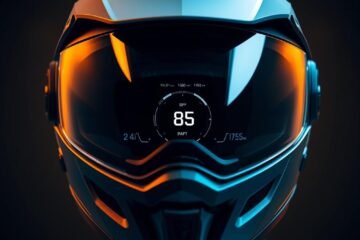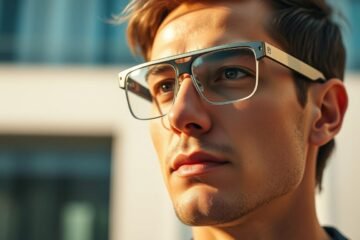Did you know that over 50 million U.S. households own at least one smart speaker? These devices have become essential for music, smart home control, and voice assistance. However, many users face common issues like muffled sound, weak bass, and echoes that can ruin the experience.
Smart speakers are more than just music players—they’re the heart of your smart home ecosystem. Whether you’re using an Amazon Echo, Google Assistant, or another device, ensuring optimal sound is crucial for the best experience. In this article, we’ll explore simple yet effective tips to enhance your smart speaker sound quality and performance.
Let’s dive into how you can improve your smart speaker’s sound quality and make the most of your investment. Whether it’s adjusting settings, optimizing placement, or leveraging advanced features, we’ve got you covered.
Take voice beyond the living room with smart audio glasses for ambient listening and calls.
Key Takeaways
- Optimize speaker placement to reduce echo and improve sound clarity.
- Adjust equalizer settings to enhance bass and treble for better sound quality.
- Pair your smart speaker with a high-quality Bluetooth speaker for enhanced audio.
- Use voice commands to control music playback across multiple speakers.
- Consider upgrading to premium music streaming services for higher audio quality.
Introduction: Why Good Sound Quality Matters
Good sound quality is the backbone of an enjoyable smart speaker experience. Whether you’re using an Amazon Echo, Google Assistant, or another device, clear audio enhances music, enhances voice commands, and ensures effective smart home control. A well-tuned speaker ensures that every word from your voice assistant is crisp and every note in your music is rich and balanced.
Smart speakers are central to daily routines, from setting reminders to controlling smart home devices. However, issues like echoes, muffled sound, or imbalanced bass and treble can disrupt the experience. Recent improvements in the Amazon Echo and Google Nest Audio show how manufacturers are prioritizing better sound, addressing these common problems.
This article will guide you through simple solutions to enhance your smart speaker’s audio. From optimizing placement to adjusting settings, we’ll explore practical tips to make the most of your device. Whether you’re a tech enthusiast or just starting out, these strategies will help you achieve the best sound quality possible.
- Define what makes good sound quality in a smart speaker.
- Explore the role of smart speakers in daily routines and smart home control.
- Identify common sound issues like echoes or imbalanced bass and treble.
- Preview the simple solutions to be discussed in the article.
By the end of this guide, you’ll know how to optimize your smart speaker for the best audio experience, ensuring clarity and enjoyment in every interaction.
Choose the Right Placement
Placing your smart speaker in the right spot can make a big difference in how well it sounds. By finding the best location, you can ensure your music and voice commands come through clearly.
Identifying Optimal Locations
To get the best sound, put your smart speaker in an open area where nothing blocks the sound. A central spot in the room is usually ideal. Avoid corners or places near big appliances that might get in the way.
For example, the Amazon Echo Studio works well when placed in an open space, letting the sound spread evenly. Testing different spots in your home can help you find what works best.
Avoiding Obstructions and Reflections
Walls and furniture can bounce sound waves, making it less clear. To avoid this, keep the area around your speaker simple. Fewer obstacles mean better sound quality.
Try moving your speaker to different spots and see how the sound changes. This simple test can help you find the perfect place for great audio.
| Location Tips | Benefits |
|---|---|
| Central Placement | Even sound spread |
| Open Areas | Less obstruction |
| Away from Walls | Reduces echoes |
Optimize Room Acoustics
Room acoustics play a significant role in how your smart speaker performs. The way sound waves interact with your surroundings can either enhance or hinder the audio experience. By understanding and adjusting your room’s acoustics, you can ensure clearer and more balanced sound from your device.
Understanding Sound Reflections
Sound reflections occur when audio waves bounce off hard surfaces like walls or floors. These reflections can cause echoes or distortions, affecting the overall listening experience. To minimize this, consider adding soft furnishings like rugs, curtains, or upholstered furniture. These materials absorb sound waves, reducing unwanted reflections and creating a more controlled acoustic environment.
Tips for Soft Furnishings and Layout
Rearranging furniture can also improve sound quality. Place your smart speaker in a central location to avoid sound waves reflecting off nearby surfaces. Additionally, adding plants or decorative elements can help scatter sound waves, further enhancing clarity. For example, placing a rug near your speaker can absorb bass frequencies, resulting in tighter, more defined low-end response.
Experiment with different layouts to find what works best for your space. Even small adjustments, like moving a chair or adding a curtain, can make a noticeable difference. By tailoring your room’s acoustics to your speaker, you can enjoy a more immersive and enjoyable listening experience.
Adjust Speaker Settings
Customizing your smart speaker’s settings can significantly enhance your audio experience. By tweaking the equalizer and balancing bass and treble, you can achieve a sound that suits your preferences and environment.
Customizing Equalizer Settings
To access the equalizer on your smart speaker, open the Amazon Alexa app or the Sonos app. Navigate to the settings menu and look for the “Equalizer” or “Audio Settings” option. Here, you can adjust the bass and treble levels to your liking.
- Open the app and go to device settings.
- Locate the equalizer option.
- Slide the bass and treble controls to desired levels.
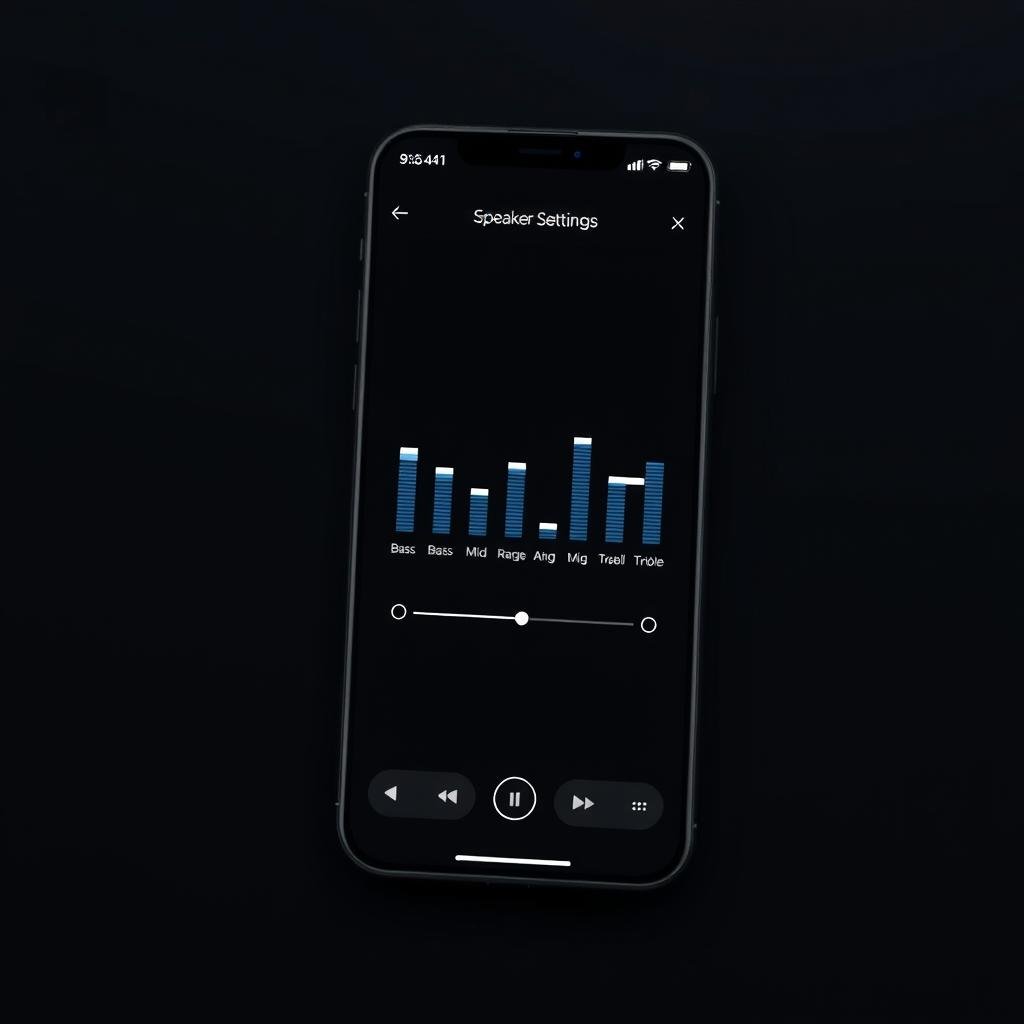
Balancing Bass and Treble Levels
For optimal sound, consider your room’s acoustics. If your space has hard floors, you might want to reduce treble to minimize echo. Soft furnishings can help absorb sound, allowing clearer audio. Use the Sonos Trueplay feature to calibrate your speaker based on room size and layout.
Pro Tip:Test different settings with various music genres to find the perfect balance for your listening pleasure.
Remember, small adjustments can make a big difference. Experiment with settings to enhance your listening experience and enjoy your music the way it’s meant to be heard.
Use High-Quality Audio Sources
When it comes to enjoying great audio from your smart speaker, the source of your music matters just as much as the device itself. Upgrading to a premium streaming service can make a significant difference in sound fidelity.
Selecting Premium Streaming Services
Premium services like Apple Music and Spotify offer lossless or high-bitrate audio, which provides a richer listening experience. For instance, the Sonos Era 100, when paired with these services, delivers a depth and clarity that basic streams can’t match.
- Choose services offering lossless or high-bitrate audio for better sound.
- Compare free and premium options to hear the quality difference.
- Test various services to find what works best with your device.
“Investing in a high-quality audio source is one of the simplest ways to boost your speaker’s performance.” – Audio Expert
Experiment with different services to find your perfect sound. Your ears will thank you!
Pair with Other Smart Speakers
Creating a multiroom audio system can significantly enhance your listening experience. By linking multiple smart speakers, you can enjoy synchronized music throughout your home, creating a cohesive and immersive environment.
Benefits of Multiroom Audio
Multiroom audio systems offer several advantages. They allow seamless music playback across different rooms, creating a balanced and harmonious sound. For example, the Sonos Era 100 and Amazon Echo models are designed to support multiroom setups, ensuring synchronized audio across your home.
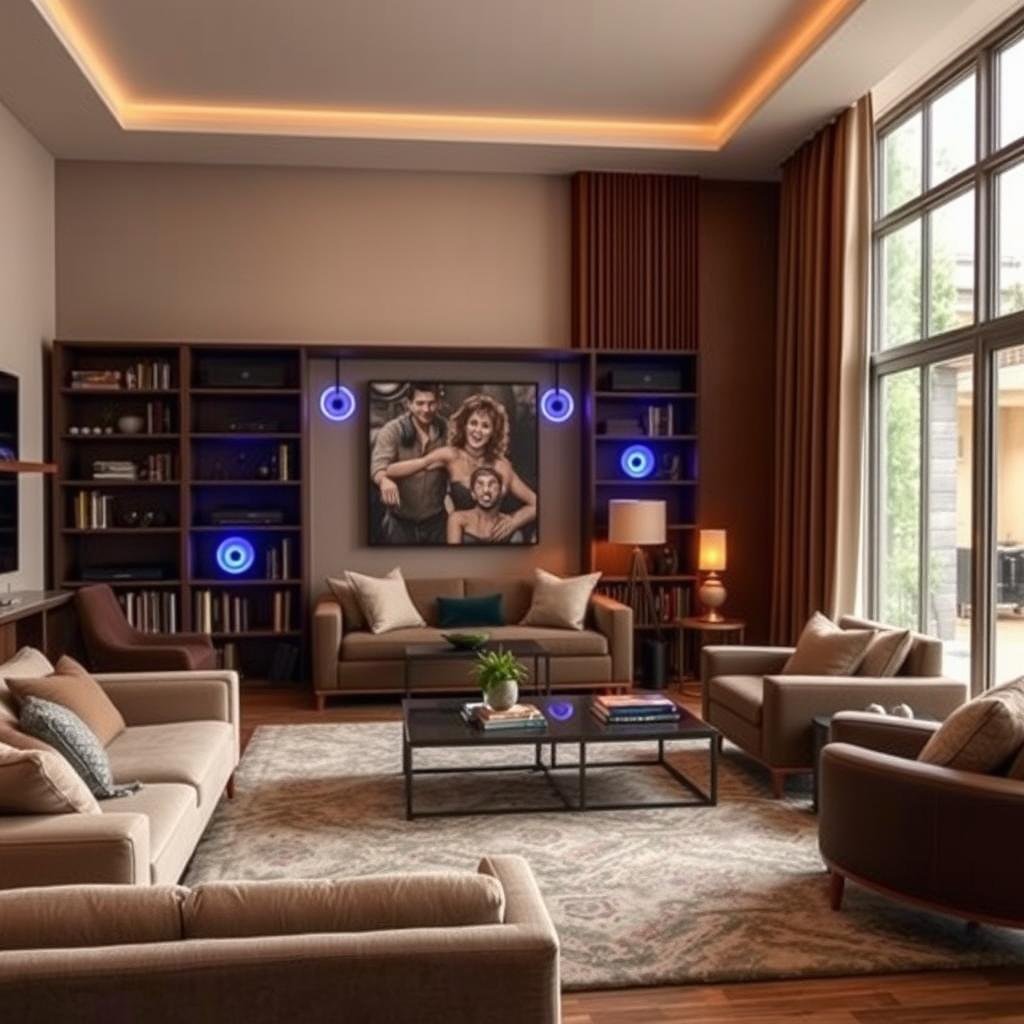
This setup is perfect for large spaces or homes with multiple levels, providing consistent sound quality in every area. The synchronized playback creates a richer and more engaging listening experience, making it feel like the music follows you wherever you go.
Synchronization Techniques for Cohesion
To achieve optimal synchronization, use the same model of smart speakers. For instance, pairing two Amazon Echo devices ensures they work together seamlessly. You can easily set this up through the Amazon Alexa app by adjusting the settings to link the speakers.
When synchronizing, place the speakers at similar heights and distances apart to maintain sound consistency. This configuration ensures that the audio remains balanced and clear throughout your home.
Tip:Experiment with different setups to find the arrangement that best suits your space and listening preferences.
By implementing these techniques, you can enjoy a unified audio experience that enhances your music and smart home control. Multiroom audio systems are a great way to elevate your smart speaker’s performance and create a more enjoyable environment for everyone.
Keep Your Speaker Updated
Regular updates are essential to keep your smart speaker running smoothly. Just like your smartphone, these devices need the latest firmware and software to perform at their best. Updates often include bug fixes, new features, and security improvements that can improve sound performance and overall performance.
Modern smart speakers like the Amazon Echo make updating easy. You can usually find the update option in the companion app, like the Amazon Alexa app. Simply navigate to the settings menu and check for updates. This process ensures your speaker stays secure and runs efficiently.
Updating your speaker regularly offers several benefits. For one, it fixes any issues that might be affecting performance. It also adds new features that can enhance your experience, such as better voice recognition or improved sound settings. Plus, updates help keep your device secure from potential vulnerabilities.
To keep your speaker in top shape, make updating a habit. Check for updates every few weeks and install them as soon as they’re available. This proactive approach ensures you always have the latest improvements and the best possible sound quality.
Clear instructions for checking updates are usually provided in the app. Take a moment to familiarize yourself with the process, and you’ll be enjoying a better listening experience in no time.
Eliminate Wireless Interference
Wireless interference is a common issue that can disrupt your smart speaker’s performance. Devices like Wi-Fi routers, Bluetooth gadgets, and even microwaves can interfere with your speaker’s signal, causing dropped connections and poor sound quality. To ensure your smart speaker works smoothly, it’s crucial to identify and minimize these interferences.
Identifying Sources of Signal Disruption
Common culprits include cordless phones, wireless cameras, and neighboring Wi-Fi networks. Physical barriers like brick walls or metal surfaces can also weaken the signal strength. Understanding where these interferences come from is the first step to resolving them.
Optimizing Router Placement for Better Connectivity
Place your router in a central location, away from walls and other electronics. Using the 5GHz band instead of the 2.4GHz can help avoid congestion. Restarting your router periodically also ensures a stable connection.
- Move devices away from obstacles like metal surfaces or concrete walls.
- Switch to the 5GHz Wi-Fi band for less interference.
- Restart your router regularly to maintain a stable connection.
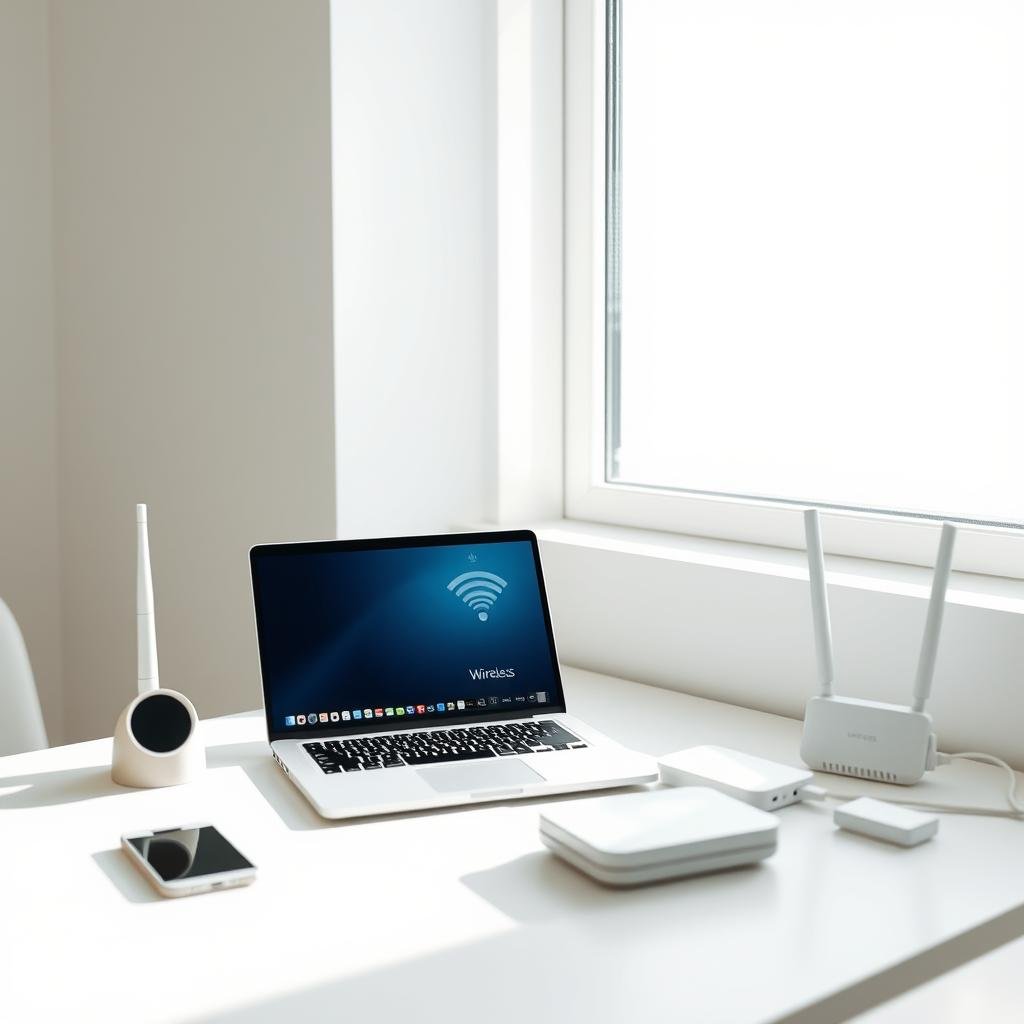
By addressing wireless interference, you can enhance your smart speaker’s sound quality and responsiveness. A well-optimized setup ensures clearer audio and faster voice assistant responses, making your smart home experience more enjoyable.
Consider External Audio Accessories
Have you ever wondered how to take your smart speaker’s audio to the next level? External audio accessories like soundbars, amplifiers, or external speakers can make a significant difference. These add-ons are designed to enhance your listening experience, offering deeper bass and clearer sound.
- Soundbars and Amplifiers: These devices boost your speaker’s bass and treble, providing a richer audio experience. For example, pairing your Amazon Echo with a soundbar can create a more immersive sound.
- External Speakers: Adding high-quality external speakers can expand your speaker’s audio capabilities, ensuring a more balanced sound in larger spaces.
When choosing external accessories, consider compatibility. Look for features like Bluetooth connectivity and integrated controls for seamless setup. For instance, the Sonos Era 100 pairs perfectly with external speakers, offering enhanced bass and clearer highs.
Many users have reported improved audio performance after adding these accessories. The Amazon Echo Studio, when paired with a soundbar, delivers a more dynamic sound with better bass response. This setup is ideal for music enthusiasts who want a more immersive listening experience.
Setting up these accessories is straightforward. Use Bluetooth pairing for a quick connection or rely on integrated controls for a hassle-free experience. By experimenting with different configurations, you can find the perfect setup that suits your space and enhances your audio enjoyment.
Remember, the right external accessories can elevate your smart speaker’s performance, offering deeper bass and clearer sound. Experiment with different options to find what works best for you and enjoy a more immersive audio experience.
Improving Smart Speaker Sound Quality, with Simple Solutions
Dealing with audio issues like echoing or muffled sound can be frustrating. However, there are straightforward fixes to enhance your experience. Start by checking your speaker’s placement and settings for quick improvements.
Addressing Common Audio Issues
Common problems include weak bass or room echo. To fix these, try adjusting the equalizer settings on your Amazon Echo or Google Assistant app. Ensure your speaker is in an open area to reduce sound reflections.
Quick Fixes for Better Audio:
- Check and adjust the speaker’s placement to minimize echoes.
- Use the equalizer settings to balance bass and treble levels.
- Ensure your speaker is updated with the latest firmware.
- Experiment with different audio sources for higher quality sound.
Regular updates and proper sourcing of audio can make a big difference. Before considering add-ons, try these simple adjustments. Your ears will thank you!
Experiment with Different Setups
Every home is unique, and there’s no one-size-fits-all solution for the best audio experience. That’s why experimenting with different placements and settings is key to finding your perfect setup.
Trial and Error: Finding What Works Best
Start by testing your speaker in various locations. For instance, placing your Amazon Echo in a central spot might reduce echo, while moving your Google Assistant device away from walls can improve clarity. Even small adjustments can make a big difference.
| Location Tips | Benefits |
|---|---|
| Central Placement | Even sound spread |
| Away from Walls | Reduces echoes |
| Open Areas | Less obstruction |
For example, users have reported that moving their Amazon Echo just a few feet away from a wall significantly improved bass response. Similarly, placing your Google Assistant device on a shelf instead of the floor can enhance treble clarity.
Keep track of your changes and results. This way, you can easily replicate the setup that works best for you. Encourage others in your household to share their feedback, as different ears might pick up on different nuances.
Remember, the goal is to create an environment where your music and voice commands sound their best. By systematically testing different configurations, you can find the ideal balance for your space and preferences.
Expert Product Roundup Insights
When it comes to choosing the best smart speaker, the options can feel overwhelming. Let’s break down the top models and what makes them stand out.
Top Smart Speaker Models of Today
Here are the leading smart speakers, each with unique features:
- Amazon Echo (4th Gen): Known for its excellent sound quality and smart home integration.
- Google Nest Mini: Offers great voice recognition and seamless Google Assistant integration.
- Apple HomePod Mini: Delivers impressive audio with deep Apple ecosystem integration.
- Sonos Era 100: Combines premium sound with multiroom audio capabilities.
Performance Comparisons and Reviews
Each model excels in different areas:
- The Amazon Echo (4th Gen) is a top choice for smart home control, with Alexa’s wide compatibility.
- The Google Nest Mini shines with conversational AI, handling follow-up questions effortlessly.
- The Apple HomePod Mini is ideal for those deeply invested in the Apple ecosystem, offering Siri integration.
- The Sonos Era 100 stands out for its high-fidelity audio and multiroom features.
| Model | Sound Quality | Connectivity | Price |
|---|---|---|---|
| Amazon Echo (4th Gen) | Premium | Wi-Fi, Bluetooth | $110 |
| Google Nest Mini | Good | Wi-Fi, Bluetooth | $49 |
| Apple HomePod Mini | Excellent | Wi-Fi, Bluetooth | $99 |
| Sonos Era 100 | High-Fidelity | Wi-Fi, Bluetooth | $249 |
These models cater to different needs, whether it’s smart home control, voice assistant capabilities, or pure audio performance. Your choice depends on your ecosystem and priorities.
Smart Home Integration and Voice Assistants
Smart home integration has become a key feature for voice assistants like Alexa, Google Assistant, and Siri. Each offers unique benefits, making them stand out in the market.
Amazon Alexa is known for its wide compatibility with smart home devices, making it a top choice for integrated ecosystems. Google Assistant excels in conversational AI, handling follow-up questions with ease. Apple’s Siri, part of the HomePod Mini, is praised for its strong privacy features and seamless integration with Apple products.
| Assistant | Compatibility | Key Features | Ecosystem |
|---|---|---|---|
| Amazon Alexa | Wide range of devices | Smart home control, multi-room audio | Amazon ecosystem |
| Google Assistant | Google and third-party devices | Advanced conversational AI | Google ecosystem |
| Apple Siri | Apple devices and select third-party | Strong privacy, Apple integration | Apple ecosystem |
When choosing a voice assistant, consider your ecosystem. Alexa is great for Amazon users, Google Assistant for Google enthusiasts, and Siri for Apple devotees. Each offers unique benefits, so pick the one that best fits your needs for a seamless smart home experience.
Conclusion
Enhancing your smart speaker’s audio experience is easier than you think. By optimizing placement, adjusting settings, and experimenting with different setups, you can significantly improve your listening enjoyment.
Remember, the key to better audio lies in small adjustments. Whether it’s moving your speaker to a central location, tweaking the equalizer, or pairing with external accessories, every change can make a big difference. Regular updates and a bit of experimentation will keep your speaker performing at its best.
Take the time to explore these tips and find the perfect setup for your space. With a little effort, you can enjoy clearer, richer, and more immersive sound from your smart speaker. Happy listening!
Related: Audio Glasses
Explore our Best Audio Glasses (Fall 2025) for open-ear music, clearer calls, and smart-assistant control.



